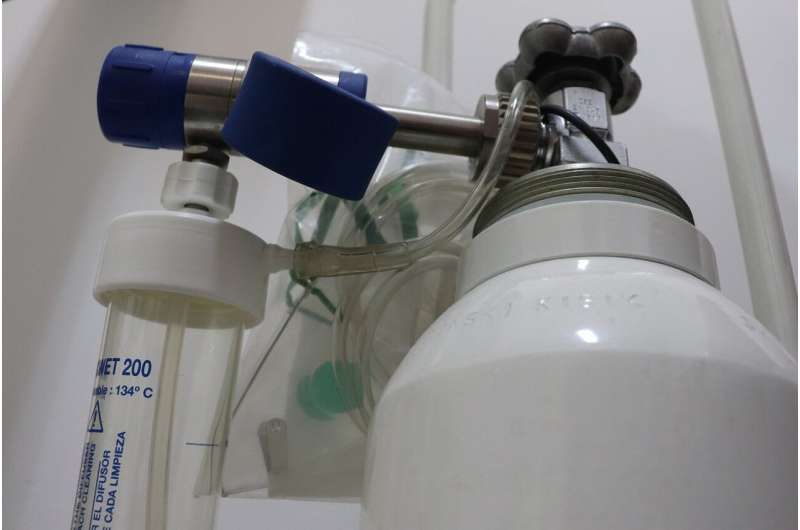COVID-19 patients may need less oxygen than previously thought

A new study, led by researchers at Uppsala University, shows that all individual patients suffering from severe COVID-19 may have lower oxygen requirements than was formerly believed. The study was conducted at a Swedish district hospital during the first wave of the pandemic in 2020. The scientists' methods, as well as their results, may be useful for future planning of health care and resources.
Oxygen provision is the key treatment for severe COVID-19, when the patient's lungs are unable to extract enough oxygen from the air. Measuring blood oxygenation enables the flow to be adjusted to patients' needs.
Oxygen shortages have affected hospitals in many countries during the pandemic, with fatal outcomes for patients. Planning how to distribute oxygen supplies among hospitals, departments and wards has yet to be supported by studies on how much oxygen is required by COVID-19 patients.
In the study now published, oxygen requirements were investigated in all the patients whose oxygen saturation was low enough for them to need oxygen but who did not receive mechanical ventilation (a total of 126 patients). Before the study, a policy had been introduced whereby health professionals from every occupational group checked the patients' oxygen saturation and optimized the oxygen flow whenever they attended the patient. Oxygen-flow adjustments were documented meticulously, which is not always done in routine medical care.
The patient group studied were typical, in terms of gender, age and BMI, in relation to other studies from the first pandemic waves in the US, Europe and China. The patients' average oxygen flow rate was 3 liters per minute (l/min), which is markedly lower than the World Health Organization's (WHO) estimate of 10 l/min for severely ill COVID-19 patients who do not need a ventilator.
"These results are surprising, but should be interpreted with caution, given the study's small size. For the larger studies now called for, the simple method in this study in Sweden can be used," says Anna Hvarfner, doctor at the Centre for Clinical Research in the County of Västmanland, which is part of Uppsala University.
"Unfortunately, oxygen shortages have led to many deaths during the pandemic, and robust evidence to underpin planning was lacking. The new routines at the Nyköping district hospital during the pandemic's first wave included a good method of investigating how much oxygen COVID-19 patients need. No one should have to die because we can't plan for the oxygen required," says Carl Otto Schell, doctor at Uppsala University's Centre for Clinical Research in the County of Södermanland.
More information: Anna Hvarfner et al, Oxygen provision to severely ill COVID-19 patients at the peak of the 2020 pandemic in a Swedish district hospital, PLOS ONE (2022). DOI: 10.1371/journal.pone.0249984
















